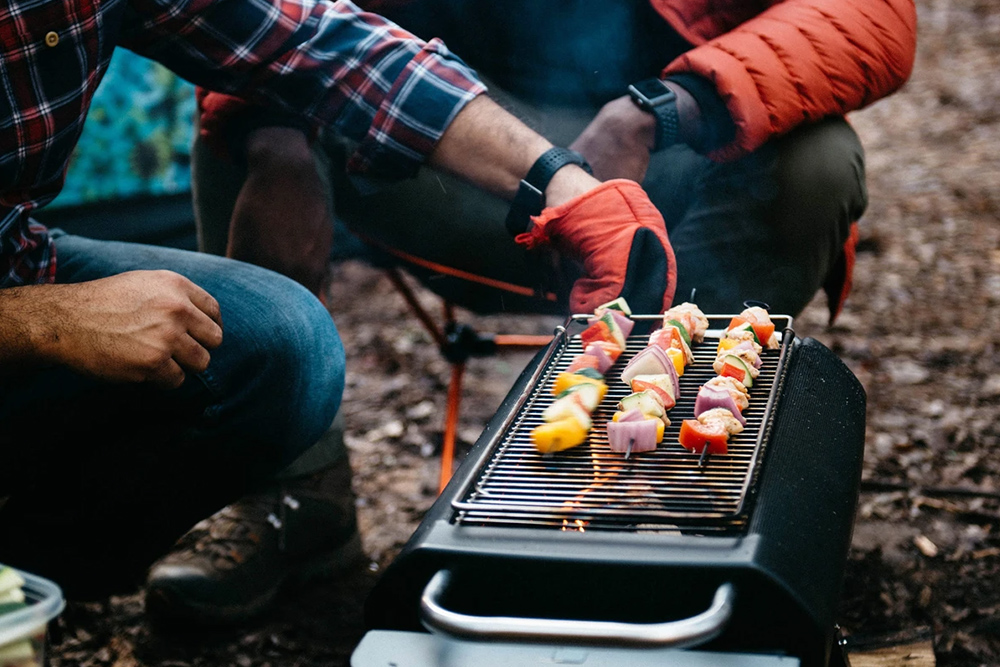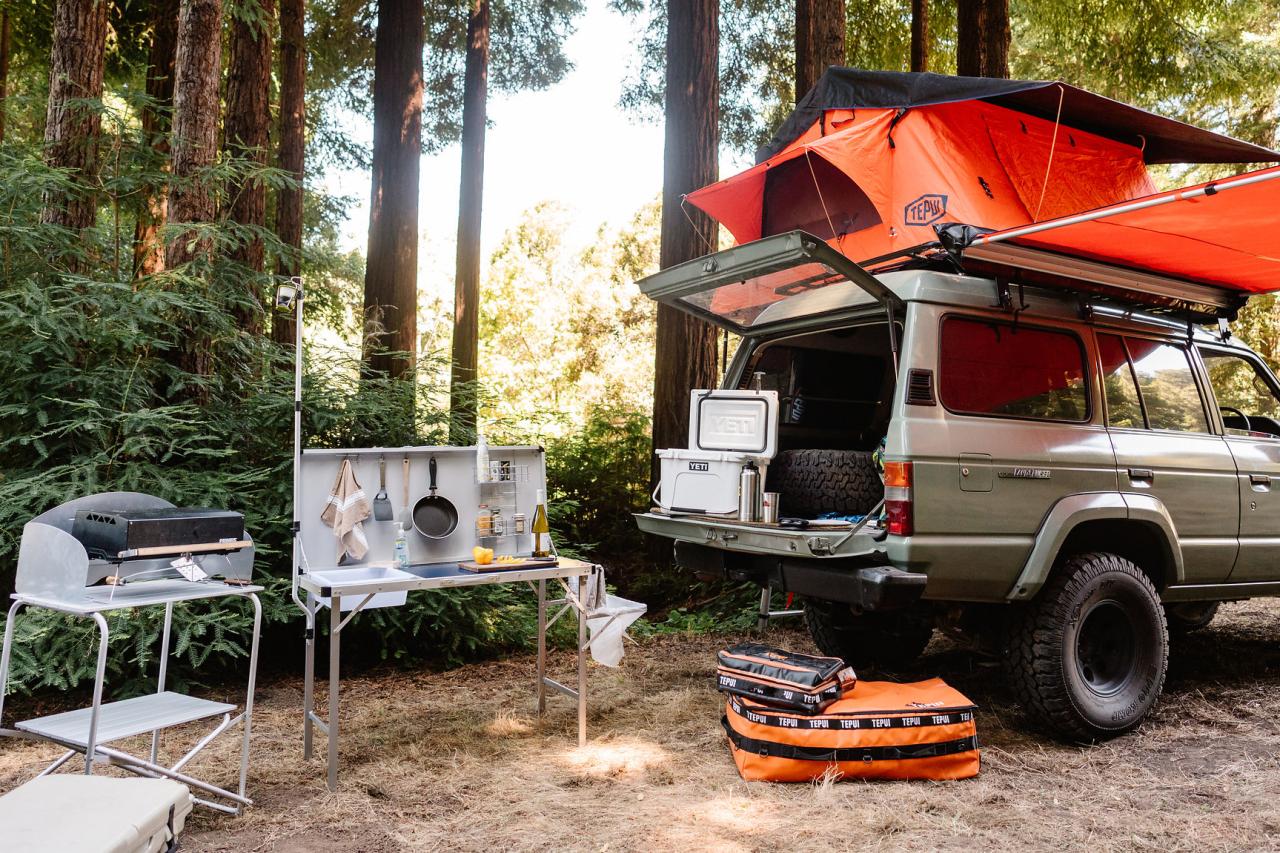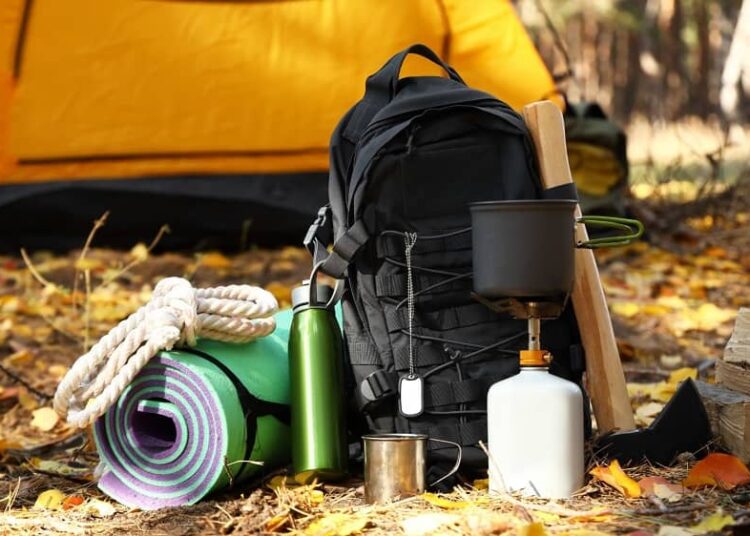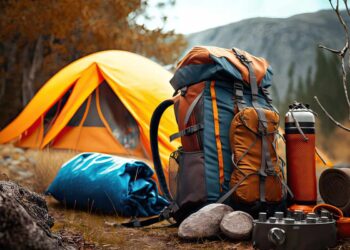There is a unique and profound magic in leaving behind the noise and chaos of daily life to immerse yourself in the natural world. The call of the wild, the simple pleasure of a crackling campfire, and the quiet awe of a starlit sky are experiences that feed the soul. But whether you’re a seasoned backpacker tackling a remote wilderness trail or a family planning a comfortable weekend at a campsite, the difference between a miserable trip and a magical one often comes down to one thing: your gear. The right equipment is your lifeline, providing the safety, comfort, and peace of mind to truly enjoy your outdoor adventure.
Choosing the right gear, however, can be a daunting task. The market is saturated with options, from ultralight backpacking gear to luxurious car camping setups. This comprehensive guide will serve as your definitive roadmap, breaking down the essential equipment for every camping trip and explaining the key features that separate the good from the great. We’ll explore the three fundamental pillars of survival, the modern camp kitchen, and the crucial tools for navigation and safety, empowering you to build a kit that is perfectly suited to your style of adventure.
The Core Three

These three categories represent the most critical gear you will buy. Your ability to stay dry, warm, and rested is the foundation of a safe and enjoyable outdoor experience. Investing in high-quality gear in these areas is non-negotiable.
- A. The Tent: Your tent is your sanctuary from the elements. It provides shelter from rain, wind, and bugs, and it is your home away from home. Choosing the right one depends on your style of camping and the environment you’ll be in.
- Season Rating: Most tents are rated as 3-season or 4-season. A 3-season tent is the most common and is perfect for spring, summer, and fall camping in mild conditions. It has more mesh for ventilation to prevent condensation. A 4-season tent is built to withstand extreme cold, heavy snow, and high winds. It has fewer mesh panels and a sturdier frame, making it a better choice for winter camping or high-altitude mountaineering.
- Materials and Waterproofing: Look for a tent made from durable, lightweight materials like polyester or ripstop nylon. The most important spec for waterproofing is the PU (Polyurethane) coating rating, measured in millimeters. A rating of 1,500mm to 2,000mm is sufficient for a good rainfly, but a higher rating provides more protection. A good rainfly is essential; it’s the part that truly keeps you dry.
- B. The Sleeping Bag: A good sleeping bag is your key to a warm and restful night’s sleep. Its primary function is to trap your body heat, keeping you insulated from the cold.
- Fill Type: The two main types of fill are down and synthetic.
- Down: Down sleeping bags are incredibly light, compressible, and offer a superior warmth-to-weight ratio. They are the top choice for backpackers who need to save space and weight. However, their major drawback is that they lose their insulating properties when they get wet.
- Synthetic: Synthetic sleeping bags are heavier and bulkier, but they are more affordable and, most importantly, they retain their warmth even when damp. This makes them a great, reliable choice for car camping and for beginners.
- Temperature Rating: This is the most important spec to check. Look for the EN or ISO temperature rating, which is a standardized system that provides a more reliable rating than a manufacturer’s own. Always choose a bag with a rating that is lower than the coldest temperature you expect to encounter.
- Fill Type: The two main types of fill are down and synthetic.
- C. The Sleeping Pad: The sleeping pad is perhaps the most underrated piece of camping gear. Its primary function is not comfort, but insulation from the cold ground, which will sap your body heat faster than the cold air.
- R-Value: The R-value is the measure of a pad’s thermal resistance. The higher the number, the better the insulation. For a warm-weather trip, an R-value of 1-2 is fine. For a winter trip, you need an R-value of 5 or more.
- Types of Pads:
- Foam Pads: These are the most basic and durable. They are lightweight and inexpensive but provide the least comfort.
- Self-Inflating Pads: These pads use a combination of foam and air. You simply open a valve, and the pad inflates on its own. They provide a good balance of comfort and insulation.
- Inflatable Pads: These are the most comfortable and compact. They are filled with air and provide a thick cushion from the ground. However, they are also the most expensive and are susceptible to punctures.
The Heart of the Campsite
A good meal can turn a good day into a great one. A well-equipped camp kitchen is essential for fueling your body and making your camping experience more enjoyable. From a simple hot cup of coffee to a full-blown gourmet meal, the right tools make it all possible.
- A. The Camping Stove: While a campfire is a quintessential part of camping, a dedicated stove is a far more reliable and efficient way to cook.
- Canister Stoves: These are the most popular type of stove for backpacking and lightweight camping. They are small, light, and easy to use. They screw directly onto a fuel canister (isobutane/propane blend) and are perfect for boiling water for coffee or rehydrating a meal.
- Liquid Fuel Stoves: These stoves are more versatile and are a great choice for cold weather camping, as their fuel performs better in low temperatures. They can also burn a variety of fuels, from white gas to unleaded gasoline, making them a great choice for international travel.
- Wood-Burning Stoves: These stoves use twigs and leaves as fuel, eliminating the need to carry heavy fuel canisters. They are a great, sustainable choice for a minimalist backpacking trip.
- B. Cookware and Utensils: You don’t need a full kitchen’s worth of gear, just the essentials.
- Cookware: Look for a lightweight pot and pan set made from aluminum or titanium. A nesting pot set is a great choice, as the smaller pots fit inside the larger ones, saving space.
- Utensils: A simple spork is a great, all-in-one utensil. A set of collapsible cups and a mug is also a must-have for a hot drink on a cold morning.
- C. Water Filtration and Purification: This is a crucial survival item. You should never drink untreated water from a stream or a lake, as it can contain harmful bacteria and viruses.
- Water Filters: These use a physical membrane to filter out bacteria and protozoa. Pump filters and gravity filters are great, reliable options for a group.
- Water Purifiers: These devices, often a small UV wand, use ultraviolet light to kill bacteria, viruses, and protozoa. They are fast and effective but rely on batteries.
- Chemical Tablets: These are a great backup option. They are small, lightweight, and effective at killing bacteria and viruses, but they can leave a slightly chemical taste in the water.
- D. Camp Food: From Dehydrated to Gourmet: Your choice of food will be determined by your trip. For backpacking, dehydrated meals are a great choice. They are lightweight, require no cooking, and are packed with calories. For car camping, you can bring a cooler with fresh ingredients and cook a full-blown gourmet meal on your stove.
Navigation and Emergency Gear

Beyond the gear for comfort, a well-prepared camper always carries a set of tools for safety and emergencies. These items are your lifelines in a crisis and are just as important as your tent and sleeping bag.
- A. Navigation Tools: In the digital age, it’s tempting to rely solely on your smartphone for navigation, but a dead battery can leave you stranded.
- Map and Compass: A physical map and a compass are your most reliable navigation tools. They don’t require batteries and are impervious to bad weather. Learning how to use them is a fundamental skill for any outdoor enthusiast.
- GPS Devices: A dedicated handheld GPS device is a great piece of gear for a serious trip. It provides a more accurate location than a smartphone and has a longer battery life. Some models also have a built-in satellite messenger, allowing you to send messages to loved ones and call for help in an emergency.
- B. Headlamps and Lighting: A headlamp is a simple but vital tool. It keeps your hands free, which is essential for setting up camp in the dark, cooking a meal, or navigating a trail after sunset.
- What to Look For: A headlamp with a good brightness rating, a long battery life, and a red-light mode, which is great for preserving your night vision.
- C. First-Aid Kit: A well-stocked first-aid kit is a non-negotiable part of your gear. It should contain everything you need to handle a minor injury, such as bandages, antiseptic wipes, blister pads, and pain relievers.
- D. Fire Starters: In an emergency, a fire can provide warmth, light, and a means to purify water. You should always carry at least two reliable fire starters, such as a waterproof lighter and a ferro rod.
Smart Gear and Sustainable Camping
The world of outdoor gear is constantly evolving, with new technologies and materials making our equipment lighter, smarter, and more sustainable. The future of camping is a blend of traditional knowledge and cutting-edge technology.
- A. Smart Tents and Solar Power: Some new tents are coming with integrated solar panels that can charge a small battery pack, providing power for your devices. This technology allows you to stay connected (for safety purposes) even in remote areas without having to carry a heavy power bank.
- B. Satellite Communication: New, compact satellite communication devices are making it easier than ever to send a text message or a distress signal from a location with no cell service. This technology provides a new level of safety and peace of mind for those who love to explore the most remote parts of the world.
- C. Ultralight Gear and New Materials: The race to reduce weight is a constant theme in the outdoor industry. New, lighter, and more durable materials are being used to make everything from tents to backpacks, allowing backpackers to cover more ground with less effort.
Conclusion
Ultimately, the “best” camping gear is a personal choice, a careful balance between weight, cost, and comfort. A minimalist backpacker’s ultimate kit will be entirely different from a car camper’s. The most important thing is to choose gear that is reliable, durable, and that matches your style of adventure.
As you build your ultimate camping kit, remember to also pack your knowledge and your respect for the environment. The Leave No Trace philosophy is a set of principles that promotes a responsible approach to the outdoors, ensuring that we leave the wilderness in the same, if not better, condition than we found it.
The gear is just a means to an end. The true goal of camping is to find a sense of peace, to challenge yourself, and to reconnect with the world around you. Your gear simply makes that journey safer, more comfortable, and more enjoyable. So, choose wisely, pack your sense of adventure, and go explore the incredible beauty of the great outdoors.







